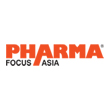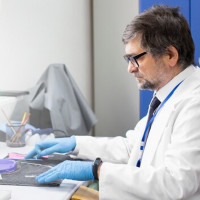Determinants of Antimicrobial Resistance (AMR) Research in South East Asia

Strong 8k brings an ultra-HD IPTV experience to your living room and your pocket.
Human and veterinary antimicrobial misuse is one of the cornerstone drivers of antimicrobial resistance (AMR), leading to the rapid drying up of the antibiotic pipeline. In 2010, the Indian subcontinent was adjudicated to be the world’s largest consumer of antibiotics and hence curbing injudicious use of antibiotics was a must. The current drivers of AMR include veterinary, human, and biomedical waste, as well as innate evolutionary genetic factors leading to the genesis of the menacing MDR, XDR and PDR strains seen worldwide. high grade of evidence now underscores the necessity for antimicrobial stewardship programs and audits across countries to augment rational antibiotic use, which is required to curb this silent public health crisis of epic proportions, especially in the context of an ever-growing South-East Asia
In the year 1928 Alexander Fleming made an outstanding medical history by discovering penicillin which helped to combat numerous deadly infections which previously had serious consequences upon human lives. But with such a revolutionary discovery the medicine saved many lives and still continuing thereafter. Fleming while in the year already expressed his concern for the antimicrobial resistance stating the fact that a time may come when the penicillin will be available in the shops which anyone shall have an access and therefore for no reason an ignorant person may use in case of minor infections and thus call upon a major resistance of the drug administered against the microbes less lethal in nature. Hence the premonition of AMR was preconceived by Alexander Fleming back in his times. According to WHO statement AMR found in viruses, bacteria and parasites will face challenges in public health genre and thereby again a minor infection could impact take a toll against human lives which might become a reason for post antimicrobial era. In such cases human lives will be at threat for minor infections. Antimicrobial resistance a naturally evolving process of antimicrobial usage (AMU) which has an immense global impact with multifarious problems inherently linked to public health domain along with agriculture, environment and animal health. Southeast Asia is quite enriched economically and therefore it forms the core for various types of infectious diseases leading to AMR. Hence various aspects need to be highlighted pertaining to the impending situation due to AMR, monitoring of the current AMR status in Southeast Asia, AMU policy to be followed, identifying Southeast Asia as the epicenter of AMR and finally to find a remedy to such upcoming consequences lead by AMR and to contribute globally. AMR is an emerging issue hence proper channeling to assess the impact need to be methodically summarized particularly in South East Asia. Sometimes the AMR in animals is innately linked with the AMR in humans although it’s a matter of rigorous research. Malaria, tuberculosis and HIV these are totally precluded since they are completely different set of infections related to public health concerns. The focus area of this article entails infections in Lower middle income Southeast Asian countries, although they have numerous dissimilarities but despite that due to some common characteristics, they share the AMR study upon the human health in these countries would corroborate more interesting findings.
In 2014 WHO released a surveillance report globally based upon the lack of database pertaining to AMR among most of the countries. Another global report on AMR policy were reviewed by WHO in the year 2014 by some of the member states. Mostly the Southeast Asian Countries have their set of policy making statements superscribed for the containment of the AMR, but that too have a drawback because they lack proper monitoring and planning of the policy. Although the actual implementation of such policy was ineffective in practicality having some disadvantages which were insubstantial. The application of such regulations was mostly observed among the food animals supplied in the domestic markets also in the export matters.
Controlling of the usage of antibiotic where the antibiotic consumption rate is tremendously high is a serious matter of concern and are connected with several factors having the precondition for example reducing poverty, livelihood of people, socioeconomic conditions. Due to the lack of proper farming systems the implementation of methodical policy towards the impact of antibiotic consumption are facing a setback. Compared to the developed countries where the farming system is precisely organized and substantially arranged accordingly on the other hand in South east Asian countries mostly the farmers are unorganized, they make a small farm enterprise in their backyard, mostly have small farm. If such is the scenario it becomes a huge challenge to optimize any such regulations of importance. Despite the incorporation of any such rules and regulations which are stringent by nature would be grueling to accomplice for those held responsible.
For instance, a putatively a simple result to this complicated problem would be an embargo on non-therapeutic use of antibiotic on animals and also has been put into action in many European countries as well. There was a total shunt on antibiotic growth promoter in many advanced countries since 2006. It was reported by Organization for Economic Co-operation and Development (OECD) that the developed countries with better socio-economic conditions have reduced dependence upon the Antibiotic growth promoters (AGPs) hence they face no difficulty owing to the shunt imposed on antibiotic growth promoters. On the contrary the developing countries where the mostly agriculture and farming systems are considerably the basis of livelihood, infection ratio is relatively high due the utilization of AGPs are highly encouraged in order to increase the production rate. Therefore, the ban upon the AGPs could bear a serious consequence if such is incorporated. In cattle rearing farms the antibiotics is comprehensively used, low-cost measure along with safety and hygiene. Due to an excessive and unscrupulous use of antibiotic usage in the cattle rearing farms in near future it might be an impending threat to our society, the antimicrobial resistance would take the shape of a pandemic and the existing antibiotics will fall short. To avoid such catastrophic situation, we need to be more vigilant. Antibiotics use should be measured and weighed before administering. Proper guidelines need to be followed while dealing with the antibiotics use so that we can avoid any untoward calamity in future.
An estimated life claimed by antimicrobial resistance (AMR) approximately is 1.27 million lives in the year 2019 with serious adverse health issues, socio-economic impacts which could get extended if not properly attributed. As we all know that AMR occurs naturally, as a matter-of-fact medicine used by humans, animal healthy, process by which food is produced all this contributes in the developing of such consequential episode of AMR. Thereby making AMR this makes AMR a social ecological matter of concern. Antimicrobials helped in the development in the production of medicine and have been contributory and influential in enlarging various agricultural productions but irrational antimicrobial use (AMU) in crops, animals and humans and the transmission of AMR is alarming across humans, animals also in the entire ecological system The international trade , travelling across the countries and globally may cause in the spread of AMR , poverty, lack of proper sanitations are the major benefactors in the process of spread of AMR environmentally and geographically.
Read more: https://www.pharmafocusasia.com/articles/determinants-of-antimicrobial-resistance-research-in-south-east-asia
Note: IndiBlogHub features both user-submitted and editorial content. We do not verify third-party contributions. Read our Disclaimer and Privacy Policyfor details.


